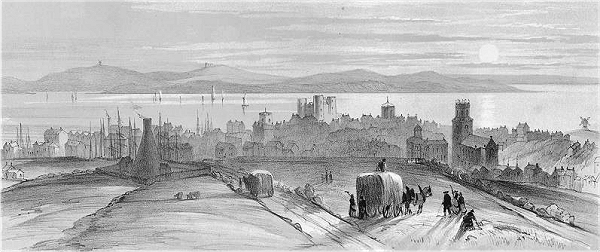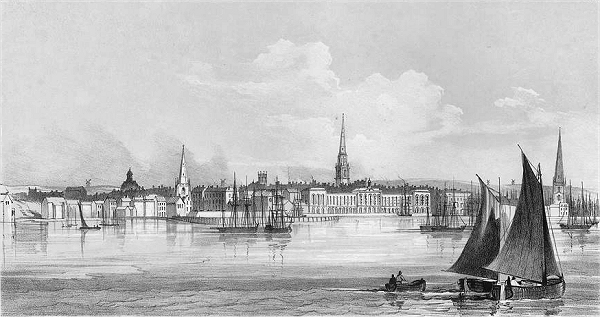| Introduction |
| This is an account of
the old churches of the original Liverpool parish
and therefore excluding those in the adjoining
townships of Kirkdale, Everton, West Derby and
Toxteth Park. Although there had been a chapel in
Liverpool for many centuries, Liverpool only
became established as a parish separate from
Walton in 1699, with the Church of Our Lady and
St. Nicholas as the parish church. In 1767 the
parish was divided into five wards, St. Nicholas,
St. George, St. Peter, St. Thomas and St. John,
each to have its own fine church. There followed
a spate of church building and subdivision of
parishes, driven largely by the desire of the
wealthy, not to mention the increasing population
of non-conformists, to have their own places of
worship near to where they lived. Many of these
were very beautiful buildings but most have,
unfortunately, been lost. |
| There where three main
driving forces for the disappearance of these
churches. Firstly, they were usually built in
areas that at the time were affluent and
fashionable but over the years became steadily
abandoned by the wealthy, who had previously paid
for the rent of church pews and maintenance, as
industrial pollution mounted and they moved
further out of town in search of cleaner air.
These areas eventually became the scene of
desperate poverty, congregations dwindled and
buildings fell into disrepair and became unsafe.
Secondly, the 19th century saw the rise of
commercial enterprises, including shops, and land
values escalated, leading to pressure on the
sites occupied by the old churches. This
continued into the 20th century. Thirdly, the
bombing of the May Blitz of 1941 flattened a huge
area of central Liverpool from Castle Street to
Park Lane and wreaked havoc in the nearby areas.
This finally put paid to many of the surviving
church buildings. Only four of the churches
discussed in this article are still standing. |
| The old prints on the
right emphasise how churches have long dominated
the skyline. In the 1715 view, St. Peter's (1704)
is prominent in the right foreground, with the
castle in the centre and St. Nicholas's in
between, at that time with just a modest square
tower and spirelet. The waterfront scene
displays, from left to right, St. Paul's (1769)
with its dome, St. Nicholas's with its spire (of
1747), the tower of St. John's (1785), the spire
of St. George's (1734) with the huge George's
Baths building in front and the spire of St.
Thomas's (1750). |
| Site
Contents |
| I have concentrated on
the most important churches built before about
1830. By that I mean those that are the most
historically and architecturally interesting. It
also helps if they are well documented and
illustrated. The first page looks at the churches
of the original five parish wards. The second at
a selection of the others built before about
1830. |
|
|
| Acknowledgements |
| The old prints
are engravings by
W.G. Herdman from his Pictorial Relics of
Ancient Liverpool, 1843, made available by Ancestry Images, with thanks. |
| Info |
| This site is
the work of Laurence Scales and is part of allertonOak. |
| The site is
entirely non-commercial and is intended for
educational purposes. |
| The site is
best viewed at a minimum of 1024x768 pixels
resolution. The page layout will be optimal with
your browser at about 1200 pixels wide. |
| The modern
colour photographs on this site are by the author
except where specified; you may copy these for
non-commercial purposes only, but please place an
acknowledgement to www.allertonoak.net at their point of use. |
|
 |
| Liverpool
from St. James's Mount in 1715 |
 |
| Liverpool
Waterfront in the late 18th century |
 |
| It's
all a bit different these days |
|